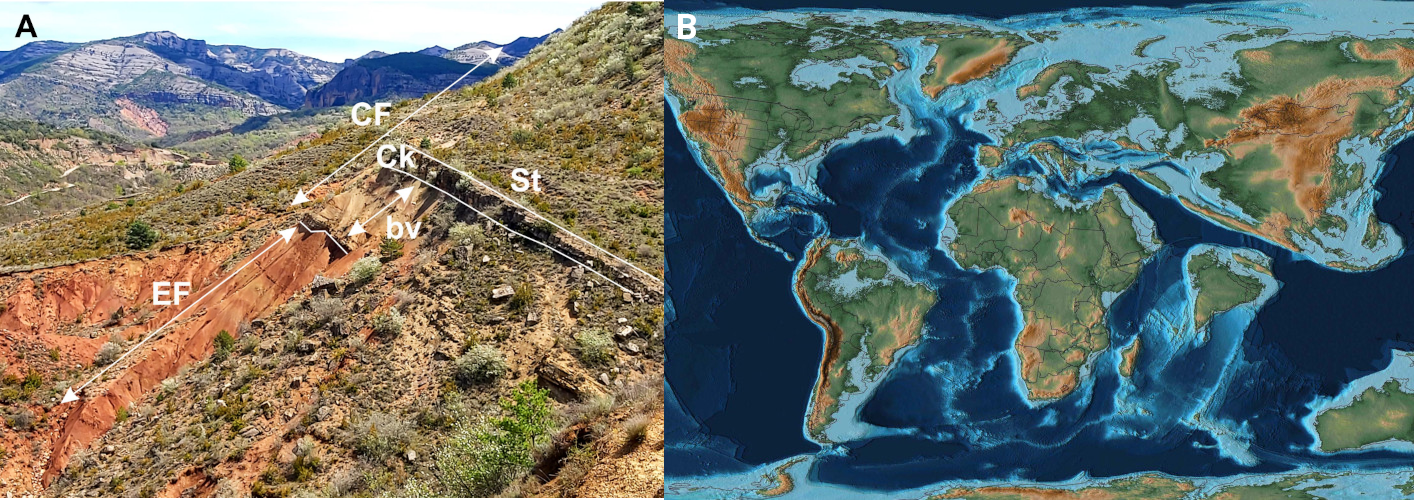Ancient Soils Could Help Predict the Effects of Climate Change
During the Eocene epoch (between 56 and 33.9 million years ago), several extremely warm events, known as hyperthermals, occurred. The most significant of these was the Paleocene-Eocene Thermal Maximum (PETM), which lasted about 270,000 years. During the late Paleocene/early Eocene, the global average temperature was 10–15°C higher than today, and atmospheric CO₂ levels fluctuated between 800 and 1800 ppm – two to four times the current level of ~423 ppm. For comparison, under moderate to high emissions scenarios, atmospheric CO₂ concentrations are expected to reach between 550–700 ppm—or even exceed 1200 ppm—by the year 2100. From this perspective, it is crucial to study past warm climate states that can serve as analogs for forecasting the future effects of modern climate change more accurately.
In an international project team, we investigated the environmental changes that characterized the PETM. For this, we analyzed terrestrial sediment layers and buried ancient soils in the Tremp-Graus Basin, located in the southern foreland of the Pyrenees in Spain. Specifically, carbonate nodules formed within these ancient soils were studied. Using a method called clumped isotope thermometry, the summer mean soil temperatures and seasonal air temperatures of the time can be estimated. This method is based on the temperature-dependent bonding of heavy carbon (¹³C) and oxygen (¹⁸O) isotopes in the carbonates. According to the clumped isotope results, the median soil temperatures during the late Paleocene and the PETM ranged from 33.9 to 39.2°C. This indicates that summer soil temperatures increased by about 5°C on average during the PETM.

B: Tectonics and Topography during the PETM; Cutout from Scotese (2016).
In addition, we compared global climate model data of the PETM with these and other proxy results. The simulations of the PETM are organized in the Deep Time Model Intercomparison Project (DeepMIP). They demonstrate that the meridional temperature distribution also changes significantly with increasing CO2 concentration, particularly in the extratropical region. Both proxy and model data indicate a much more even global temperature distribution compared to today’s climate, which had numerous implications for the climate, flora, and fauna of that time.
Link to the article: https://www.nature.com/articles/s43247-025-02479-8
WG Regional Climate Modelling
References:
Újvári, G.; Kele, S.; Rinyu, L.; Payros, A.; Stadelmaier, K. H.; Kovács, J.; Kovács, I.; Bajnóczi, B.; Pujalte, V.; Schmitz, B.; Bernasconi, S. M., 2025. Substantial continental temperature rise over the Paleocene-Eocene Thermal Maximum in the Pyrenees. Communications Earth & Environment, 6 (1), Article no: 499. doi:10.1038/s43247-025-02479-8
Scotese, C.R., 2016. PALEOMAP PaleoAtlas for GPlates and the PaleoData Plotter Program, PALEOMAP Project, http://www.earthbyte.org/paleomap-‐paleoatlas-‐for-gplates/
